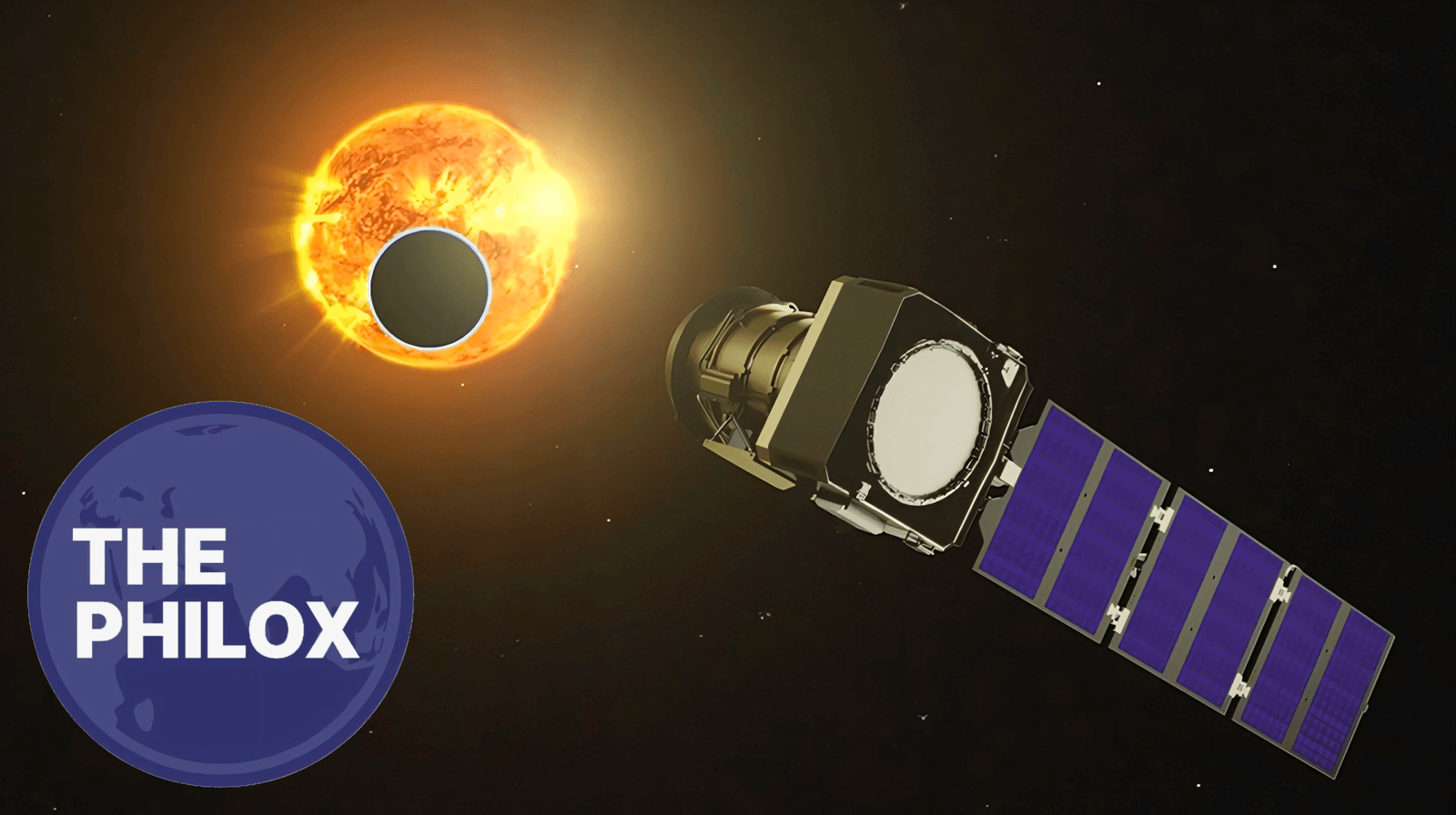
Space exploration has advanced remarkably thanks to the search for planets outside our solar system.
For advertisement on our platform, do call at +91 6377460764 or email us at contact@thephilox.com.
To find the atmospheres and possible support for life of exoplanets—planets orbiting stars outside our solar system—scientists are always looking for fresh approaches of analysis. This effort will be much aided by NASA’s forthcoming Pandora Mission.
Specifically intended to investigate the atmospheres of exoplanets and the activity of their host stars through long-duration, multiwavelength studies, Pandora is a SmallSat (small spacecraft).
Unlike big observatories like the James Webb Space Telescope (JWST), which concentrate on high-resolution photography, Pandora will continually track exoplanets for protracted times to compile long-term data on their atmospheres.
This project seeks to identify water, clouds, hazes, and exoplanetary atmospheres’ complexity as well as evaluate their possible habitability.
Goals of the Mission: Deeply Examining Exoplanets
The main objectives of the Pandora Mission include many ones meant to advance our knowledge of far-off worlds.
At least 20 exoplanets—from Earth-sized rocky planets to enormous Jupiter-like gas giants—will be the main emphasis of the expedition. Examining these worlds helps Pandora try to:
1. Describe planetary atmospheres.
Analyzing the how light passes through exoplanet atmospheres will help Pandora to ascertain their composition. Particularly sought for by scientists are:
- One of the most important components in determining possibly livable worlds: water vapor.
- clouds and hazes that might reveal aspects of atmospheric chemistry and climate.
Other gases, include methane and carbon dioxide, which might point to planetary processes like those on Earth.
2. Know Stellar Action
Separating planetary signals from stellar interference is difficult since host stars affect the atmosphere measurements of exoplanets.
Pandora will investigate how variations in starspots, brightness, and stellar activity affect atmospheric data. This is especially crucial as many exoplanets round active stars whose radiation can affect the results.
3. Boost Current Projects
Greater projects like the James Webb Space Telescope (JWST) are meant to complement Pandora. JWST has a limited observation period even if it offers thorough views of exoplanets.
Conversely, Pandora will offer ongoing, long-term observation that will help experts better grasp how planetary atmospheres evolve with time.
Technological Innovations: Big Capability SmallSat
Pandora’s small scale belies advanced equipment meant to properly analyze extraterrestrial atmospheres. Among its main technical innovations are:
1. The all-aluminum Cassegrain Telescope
Pandora boasts a 0.45-meter aperture half-meter all-aluminum Cassegrain telescope. This architecture has various benefits:
Lightweight and thermally stable: The all-aluminum construction eliminates distortion brought about by space temperature fluctuations.
Dual-wavelength observation allows the telescope to concurrently gather visible light and infrared (IR) data, therefore offering a more whole view of exoplanet atmospheres.
Two: the Transit Spectroscopy Approach
Pandora will use transit spectroscopy—a technique for analyzing stellar light passing through the atmosphere of an exoplanet.
From our vantage point, some of the starlight passes through the planet’s atmosphere when an exoplanet transits—crosses in front of its star—allows Pandora to detect particular chemical fingerprints in the light. Scientists will be able to ascertain:
- Water vapours’ presence
- The makeup of clouds and hazes
- There are plenty of gases like methane and carbon dioxide.
Third. Taking Care of Stellar Contamination
Stellar contamination—the interference of a host star’s light with planetary measurements—is a main difficulty in exoplanet research. Many stars possess:
Darker, colder areas known as starspots
Faculae: brighter, hotter areas
magnetic activity generating variations in luminosity
Pandora will simultaneously view visible and infrared wavelengths, enabling researchers to distinguish planetary signals from star interference.
This feature enhances the precision of investigations on extraterrestrial atmospheres.
Team of experts behind Pandora working together
Comprising several universities, the Pandora Mission combines knowledge of spacecraft architecture, optical engineering, and data analysis:
Leading the endeavor and offering general project management, NASA’s Goddard Space Flight Center
Developing the telescope and its optical equipment is Lawrence Livermore National Laboratory.
Contributing to sophisticated scientific data processing is NASA’s Ames Research Center.
Providing the spacecraft bus, Blue Canyon Technologies supplies the structure housing Pandora’s instruments and systems.
This cooperation guarantees that Pandora has the best scientific knowledge and technology tools to fulfill its goals of mission.
Launch details and mission timeline
Pandora’s spacecraft bus is finished as of January 2025, therefore attaining a significant turning point in mission evolution. The goal still points forward for fall 2025 launch.
Deployed into a sun-synchronous low-Earth orbit, Pandora will pass over the same areas of Earth at the same local time every day.
Consistent illumination conditions from this orbit facilitate the analysis of extraterrestrial atmospheres.
Scientific Impact: Getting Closer to Discovery of Habitable Worlds
Exoplanet research will be substantially changed by the Pandora Mission. Long-term observations from Pandora will:
In exoplanet atmospheres, raise the detection accuracy of water, clouds, and hazes.
Support researchers in better understanding of star activity and how it influences measurements of planetary atmosphere.
By selecting the top prospects for habitability research, guide next extraterrestrial expeditions.
Improve the information gathered by JWST and other observatories so that exoplanets may be seen more whole.
Through research of a wide spectrum of exoplanets, Pandora will increase our knowledge of planetary atmospheres and help us to find worlds fit for humans.
In essence, a pioneering effort in exoplanet research.
The research of exoplanetary atmospheres has advanced significantly thanks in great part to NASA’s Pandora Mission By means of its creative technology, extended viewing periods, and cooperation with more ambitious projects, Pandora will improve our understanding of far-off worlds and their possibilities to sustain life.
expeditions like Pandora bring us one step closer to addressing basic concerns as we keep exploring the huge universe: Are we alone in the universe? Exists another planet that would be livable outside our solar system?
With Pandora’s innovative findings, we are entering a new age in exoplanet discovery, opening doors for next investigation and therefore broadening our knowledge of the cosmos.
Stay Connected and Share Your Stories
For all those inspired by stories of resilience and ambition, follow us on X/Twitter and on Instagram . For those with untold stories that you would love to share, please send them to contact@thephilox.com






